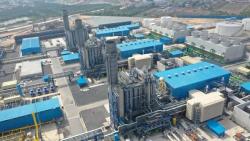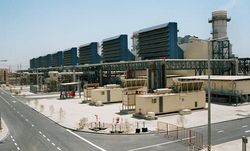
OR WAIT null SECS
© 2024 MJH Life Sciences™ and Turbomachinery Magazine. All rights reserved.
Is your pre-startup flushing acceptable?
One of the most important pre-start-up operations for an auxiliary system is flushing. The object of flushing is to render the entire auxiliary system free of excessive particles that could enter into critical equipment components, thus causing significant equipment damage. To ensure efficient field flushing preparation, understanding of the entire system and monitoring of flushing operations is required.
Flushing
The basic philosophy of any flushing system should be to avoid duplication in flushing that merely prolongs the action and minimizes the effect. Therefore, any possible pre-cleaning prior to installation is advisable. As an example, all interconnecting piping should undergo thorough cleaning when received in the field. Once clean, piping should be treated in ‘white room conditions’ prior to installation. Any special care taken at this time will significantly reduce flushing time. Considering the volume of interconnecting pipe, its cleanliness is a significant contributor to minimizing flushing times. Since the majority of interconnecting pipe volume exists in atmospheric drain pipe any dirt in the unwetted (top) portion of the pipe will cause significant problems during the flushing operation, since these pipes are not pressurized.
Many flushing operations have experienced setbacks as the result of a high liquid level in the drain lines, which causes a significant amount of debris to appear in the flushing screens when the system appeared to be ready for acceptance.
Determination of acceptability
The final check of flushing acceptability is performed by using screens, usually 100-mesh or finer depending on the system. It is important to be sure that screens are not incorporated into the system until the system is deemed to be reasonable clean. Initially 60-mesh or greater should be used. If this practice is not followed, screens can break, thereby causing long term problems with the system. Anytime that 100-mesh screen are used they should be backed by 60-mesh screens as a minimum to minimize the possibility of breakage.
The acceptance criteria should be based on a practical approach. Final acceptance should take into consideration that the drain side of most auxiliary systems is unpressurized and is vented to atmosphere. As a result, a small amount of debris can and will enter the system and will always be present. Once a consistent low debris load void of any hard, metallic particles is achieved, the drain side should be considered to be clean.
The supply side must be consistently free of all hard particles and debris. 100-mesh screens should be installed at each system final supply point to the equipment (note that all jumpers are removed at this point). A typical limit for soft (non-metallic) particles is 20 for a 2” schedule 40 pipe.
The acceptance criteria should be mutually agreed by the vendor and the user in advance of issuing the flushing procedure. Note that metallic particles are not acceptable in any location during final flushing acceptance. Since many systems today utilize stainless steel piping and components, the use of a magnet does not conclusively prove the absence of metallic particles since stainless steel is non-magnetic.
Once the system is accepted all screens should be moved. It is recommended that the system be kept running until critical equipment startup. Shutting down the system at this point will only expose it to the possibility additional debris loads from the environment.



